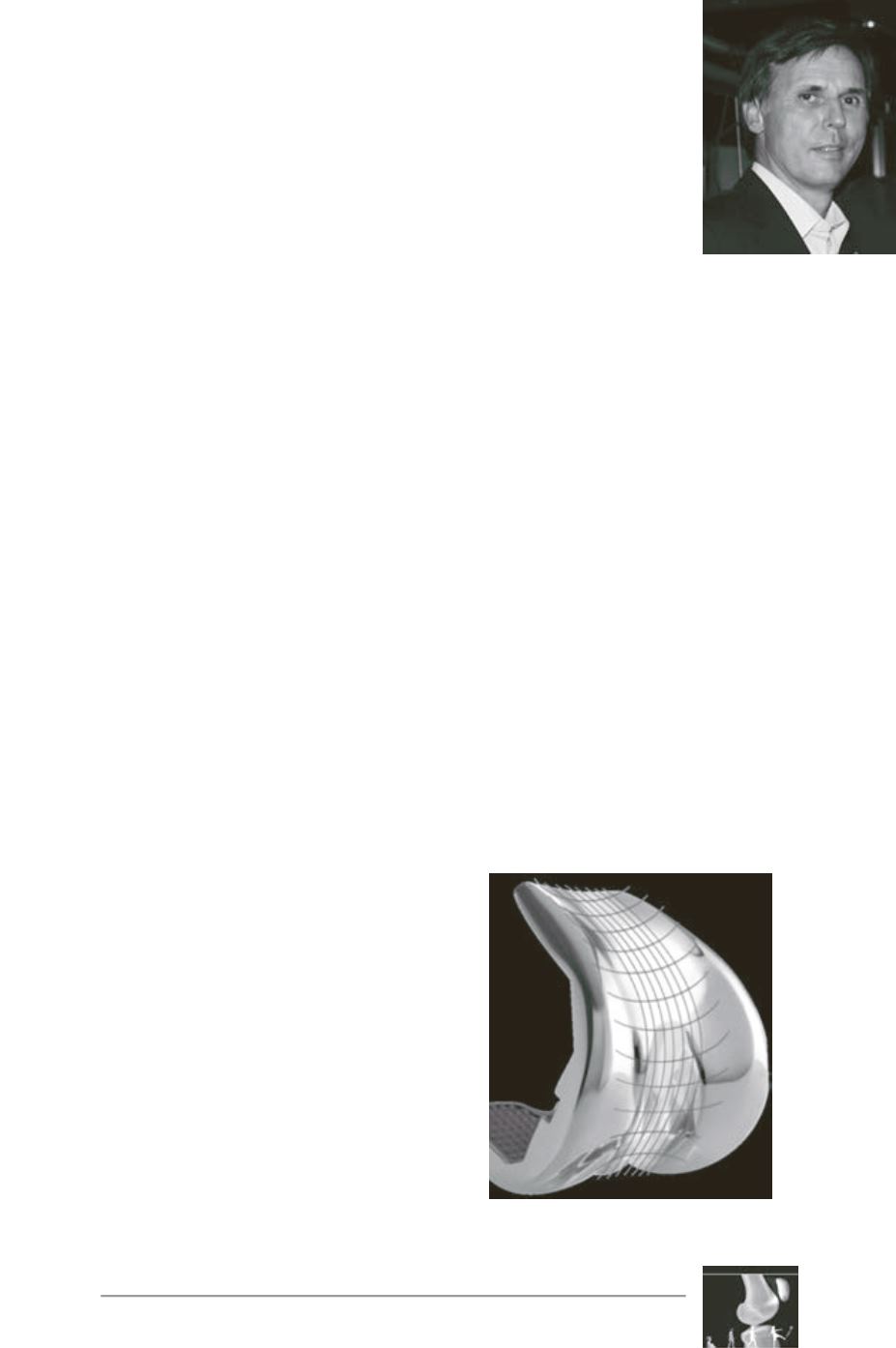

337
Introduction
Nowadays, the indication for patellar resur
facing in prosthetic surgery is controversial.
While the decision for resurfacing ought to
depend on risk-benefit reports for the patient,
this seems more linked to the personal
preferences of the surgeon but also depends
on training.
A less studied question concerns the notion of
patellofemoral congruency between femoral
implants and native patellae, which is subject
to anatomical variation. Does poor congruency
have consequences for the result?
The goal of this study is to observe, by
arthroscopy and radiology, the congruency
between native patellae of different shapes with
a single femoral implant, and to evaluate the
differences in clinical results at one year in
terms of the congruency observed.
Materials
17 patients, who underwent surgery for a total
knee prosthesis, were included between
September 2010 andSeptember 2011.Voluntary
and informed consent was obtained from each
of these patients.
The surgical indication for prosthetic replace
ment was degenerative arthrosis impinging on
daily life, refractory to initial medical treatment.
Exclusion criteria included obesity with BMI
> 29, Maldague stage 3 lateral patellar
subluxations or an irreducible genu valgum,
severe patellofemoral chondropathy.
The prosthetic implant selected for each patient
was the tricompartmental KNEETEC prosthesis
from Tornier with its inverted trochlear dome
possessing a constant radius of curvature over its
whole contour, with a raised lateral side (fig. 1).
Whether to resurface
the patella in total
knee arthroplasty:
contributions from an arthroscopic
and radiographic femoropatellar study
of a total knee prosthesis -
A series of 17 cases
O. Courage, L. Malekpour
Fig. 1











